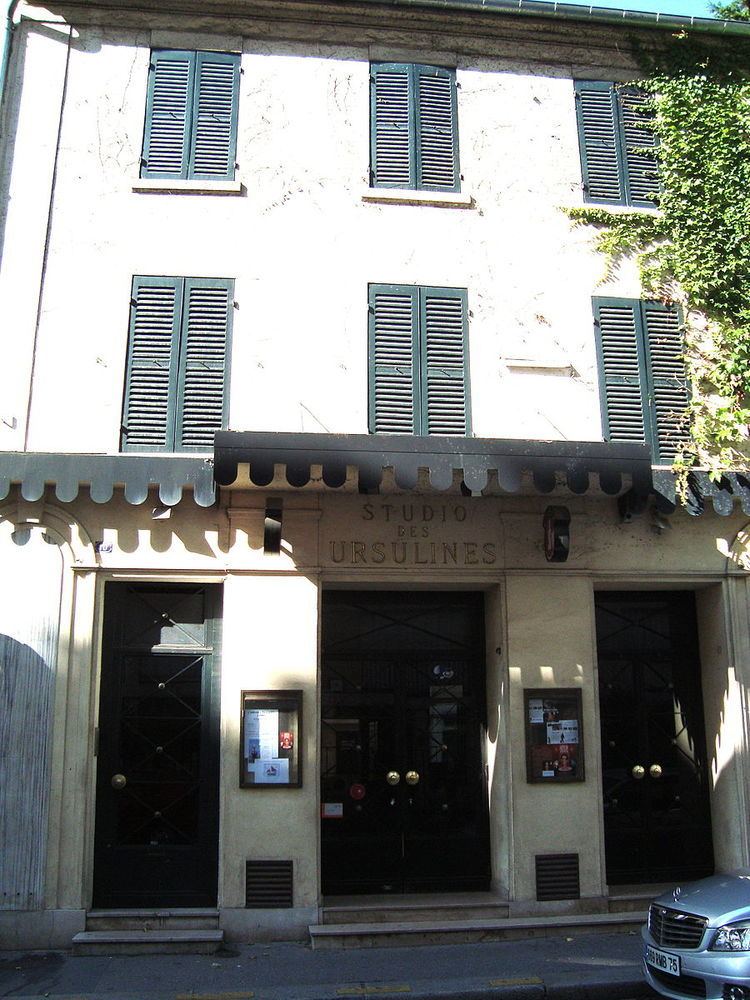Type Cinema Capacity 122 Function Movie theater | Opened 21 January 1926 Phone +33 1 56 81 15 20 | |
 | ||
Address 10 Rue des Ursulines, 75005 Paris, France Similar La Pagode, Le Balzac, Théâtre du Vieux‑Colombier, Arènes de Lutèce, Gare du Luxembourg Profiles | ||
Studio des ursulines visite de la cabine
The Studio des Ursulines is a cinema in the 5th arrondissement of Paris, at No.10, Rue des Ursulines. It is one of the oldest cinemas in Paris to have kept its facade and founder's vision: to offer a venue for art and experimental cinema. Gilles Renouard of Paris Cinéphile describes it as 'an astonishing experience' for its nostalgic associations and being able to be within 3 metres of the screen if you sit in the balcony. It has 1 screen.
Contents
- Studio des ursulines visite de la cabine
- Founding
- Premieres
- The scandal of 1928
- Twenty first century
- In film
- References
Founding
In 1925, actors Armand Tallier and Laurence Myrga choose the small rue des Ursulines to establish a cinema to specialize in avant-garde films and catered to art house audiences. Thus, the first avant-garde cinema in France was born, a precursor to the now established system of "Art et Essai."
The cinema opened January 21, 1926. Films by André Breton, Man Ray, Fernand Léger, René Clair and Robert Desnos were shown.
Premieres
Between January 1926 and December 1957, a wide range of now-classic films premiered at the theater, such as René Clair's Le Voyage Imaginaire, Von Stroheim’s Greed, Von Sternberg’s The Blue Angel, Roberto Rossellini’s’ Amore and Howard Hawks A Girl in Every Port. In 1958 it showed work by Satyajit Ray, Andrzej Wajda, Ingmar Bergman and Luis Bunuel.
It is one of two cinemas in central Paris whose facades have not been significantly altered.
The scandal of 1928
In 1928, it premiered the first film of Germaine Dulac, taken from a story by Antonin Artaud, The Seashell and the Clergyman. The film was heckled by the surrealists André Breton and Louis Aragon, leading to a fight that stopped the screening. Tallier did not call the police and the film screened took place few weeks later. Tallier became associated in the 1950s with the creation of the Art et Essai, movement with the birth of l’AFCAE (Association Française des Cinémas d’Art & d’Essai) in 1955.
Twenty-first century
Since March 2003, the majority of the cinema's daytime programming is aimed at the 'Art & Essai’ public, especially younger audiences. In the evening animation and cinéclub, (Film Club) screenings dominate.
